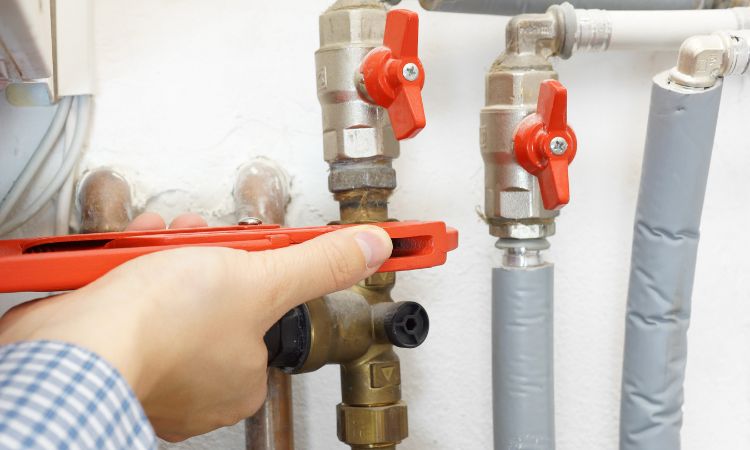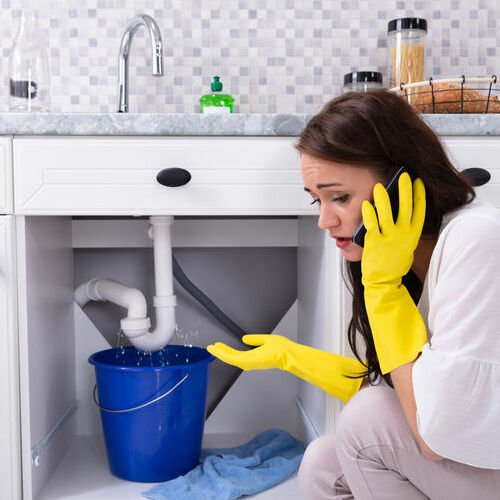Tackling Plumbing Problems in Older Homes: Important Guidance
Tackling Plumbing Problems in Older Homes: Important Guidance
Blog Article
Were you hunting for ideas about Plumbing Issues in Older Properties and How to Fix Them?

Older homes typically include charm, character, and background, but they can likewise bring a host of pipes problems. Whether you're taking care of aging pipelines, low tide pressure, or leakages, understanding just how to address these common troubles is critical to keeping a safe and useful home. In this guide, we'll explore the regular pipes challenges faced by older homes and offer practical remedies to keep your pipes in top shape.
Understanding Usual Pipes Concerns
Aging Pipelines
Among the most typical concerns in older homes is aging pipelines. Relying on the period in which your home was constructed, the pipes could be made from products that have degraded gradually, such as galvanized steel, cast iron, or even lead. These materials can corrode, come to be brittle, or establish leaks, causing water damages and possible health hazards.
Water High Quality Testing
Older pipelines can impact the quality of your water. Conduct a water top quality test to look for pollutants such as lead, rust, or various other pollutants that may be introduced by maturing pipelines.
Solutions for Common Pipes Issues
Changing Aging Pipes
If your home has old, deteriorating pipes, think about changing them with contemporary products like copper or PEX. This can be a substantial financial investment, however it will stop future concerns and boost the safety and security and dependability of your plumbing system.
Fixing Low Tide Stress
To deal with low water stress, start by cleaning or replacing old fixtures and eliminating mineral build-up in the pipelines. If the issue lingers, it may be needed to replace sections of corroded pipes.
Repairing and Replacing Dripping Pipelines
For little leakages, you can make use of pipe clamps or epoxy putty as a momentary fix. Nevertheless, it's finest to change leaking pipelines totally to stay clear of additional damage.
Upgrading Components
Upgrading old fixtures to modern-day, water-efficient versions can boost your home's pipes efficiency and decrease water consumption. Try to find components with the WaterSense tag for the very best performance.
Dealing with Pipeline Corrosion
If your pipes are corroded, changing them with corrosion-resistant products like copper, PVC, or PEX is the most effective solution. Regular inspections and water quality maintenance can aid avoid better corrosion.
Low Water Pressure
If you're experiencing low tide stress, maybe because of natural resources, corrosion inside the pipelines, or old components that are no longer operating successfully. This can be a major hassle, especially in locations like showers and sinks.
Leaking Pipelines
Leaks are another constant problem in older homes, commonly triggered by rusty or worn-out pipes. Even small leaks can lead to considerable water damage, mold and mildew development, and boosted water expenses if not resolved immediately.
Outdated Fixtures
Obsolete pipes components such as taps, bathrooms, and showerheads not only look old but may additionally be much less effective, susceptible to leaks, or inappropriate with contemporary pipes standards.
Pipe Corrosion
Deterioration is an usual issue in older pipes, particularly those made from galvanized steel or actors iron. Corroded pipes can restrict water circulation, trigger staining, and at some point lead to leakages or pipe ruptureds.
Examining the Condition of Your Pipes
Examining Noticeable Pipes
Begin by examining any kind of noticeable pipelines in your house, such as those in basements, crawl spaces, or under sinks. Look for indications of deterioration, leakages, or corrosion, which can indicate underlying problems.
Looking for Leakages
Check for leaks by examining areas around faucets, bathrooms, and under sinks. You can likewise monitor your water meter prior to and after a period of no water make use of to detect hidden leaks.
When to Call a Professional
While some plumbing issues can be managed with do it yourself options, there are times when it's ideal to contact a specialist. If you're dealing with significant leakages, considerable corrosion, or are unclear concerning the condition of your pipes, an accredited plumbing can give skilled analysis and repair work.
Preventive Maintenance Tips
Normal Evaluations
On a regular basis check your plumbing system for signs of deterioration. Catching concerns early can protect against costly fixings down the line.
Water Stress Policy
Ensure your water pressure is within the advised range to avoid worrying your pipes and components. A plumber can set up a stress regulator if needed.
Water Top Quality Maintenance
Install water filters or softeners if your water top quality is poor. This can shield your pipes and fixtures from damages brought on by tough water or pollutants.
Aggressive Pipeline Substitute
If your home has older pipes, think about positive replacement before major issues arise. This can conserve you from emergency situation repair services and water damages.
Final thought
Handling pipes problems in older homes calls for a mix of alertness, preventative upkeep, and timely upgrades. By recognizing the usual challenges and understanding when to look for expert aid, you can ensure your plumbing system stays useful and trustworthy for years to find.
Common Plumbing Issues in Older Homes and How to Fix Them
Owning an older home in Australia comes with its unique charm and a set of challenges, especially when it comes to plumbing. The Sunshine Coast has many older properties that can harbour plumbing problems that aren t just inconvenient but potentially costly. Here s a look at some common plumbing issues in older homes and expert advice on how to handle them.
Outdated Piping Materials
Many older homes were built with galvanised steel, cast iron, or even lead pipes, materials that are far from ideal by today s standards. Galvanised pipes are prone to corrosion and clogging, while lead pipes pose serious health risks.
How to Fix:
Replacing old pipes is a job for a professional. Upgrading to copper or PVC piping not only enhances water quality and flow but also increases the property s safety and value. If you suspect your home has outdated materials, a licensed plumber can conduct a thorough inspection and recommend the best course of action.
Corrosion and Pipe Degradation
Over time, exposure to water and minerals can cause pipes to corrode, leading to leaks, bursts, and water contamination. Corrosion is especially common in homes over 50 years old.
How to Fix:
Regular inspections can catch early signs of corrosion. If corrosion is found, the affected section of piping often needs to be replaced. For homes with extensive corrosion, a complete plumbing overhaul might be necessary. It s crucial to consult with a plumbing expert to understand the extent of the issue.
Tree Root Intrusion
Older neighbourhoods usually have mature trees whose roots can intrude into pipe lines, causing blockages or damage. This is particularly problematic for sewer lines, where roots seek out water sources.
How to Fix:
A plumber can use a specialised camera to inspect sewer lines for root intrusion. If roots are a problem, methods like root cutting or hydro-jetting can clear the obstruction. In severe cases, part of the pipe may need replacing. Consider root barriers around the piping to prevent future issues.
Inadequate Water Pressure
Low water pressure in older homes can be due to various factors, including corroded water lines, sediment build-up in pipes, or outdated fixtures.
How to Fix:
First, check if the low pressure is isolated to one area or throughout the house. Replacing old fixtures can sometimes resolve the issue. However, if the problem is more widespread, it might be due to sediment or corrosion. Flushing the system or replacing the affected pipes usually restores normal pressure. Again, a professional assessment is advisable.
Outdated Fixtures
Older homes often feature fixtures that are not only visually dated but functionally inefficient. This includes everything from toilets and taps to showerheads and washing machine hoses.
How to Fix:
Updating these fixtures can improve both water efficiency and the aesthetic appeal of your home. Modern fixtures are designed to conserve water, which can significantly reduce your water bill and lessen your environmental impact.
Conclusion
Maintaining the plumbing in an older home requires a proactive approach. Regular checks and updates are key to preserving these beautiful properties. If you re facing plumbing issues in your older home, it s best to call on experienced professionals like Green & Gold Plumbing & Gas. With the right expertise, even the most daunting plumbing problems can be resolved, ensuring that your home s character is maintained while its functionality is enhanced.
https://gandgplumbing.com.au/common-plumbing-issues-in-older-homes-and-how-to-fix-them/

I have been very drawn to and I really hope you enjoyed reading the blog post. So long as you appreciated our blog post kindly do not forget to share it. We value reading our article about Plumbing Problems In Old Homes.
View More Report this page